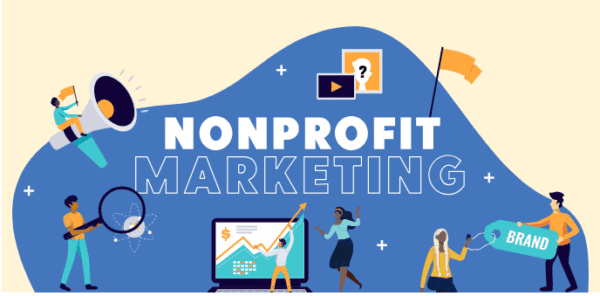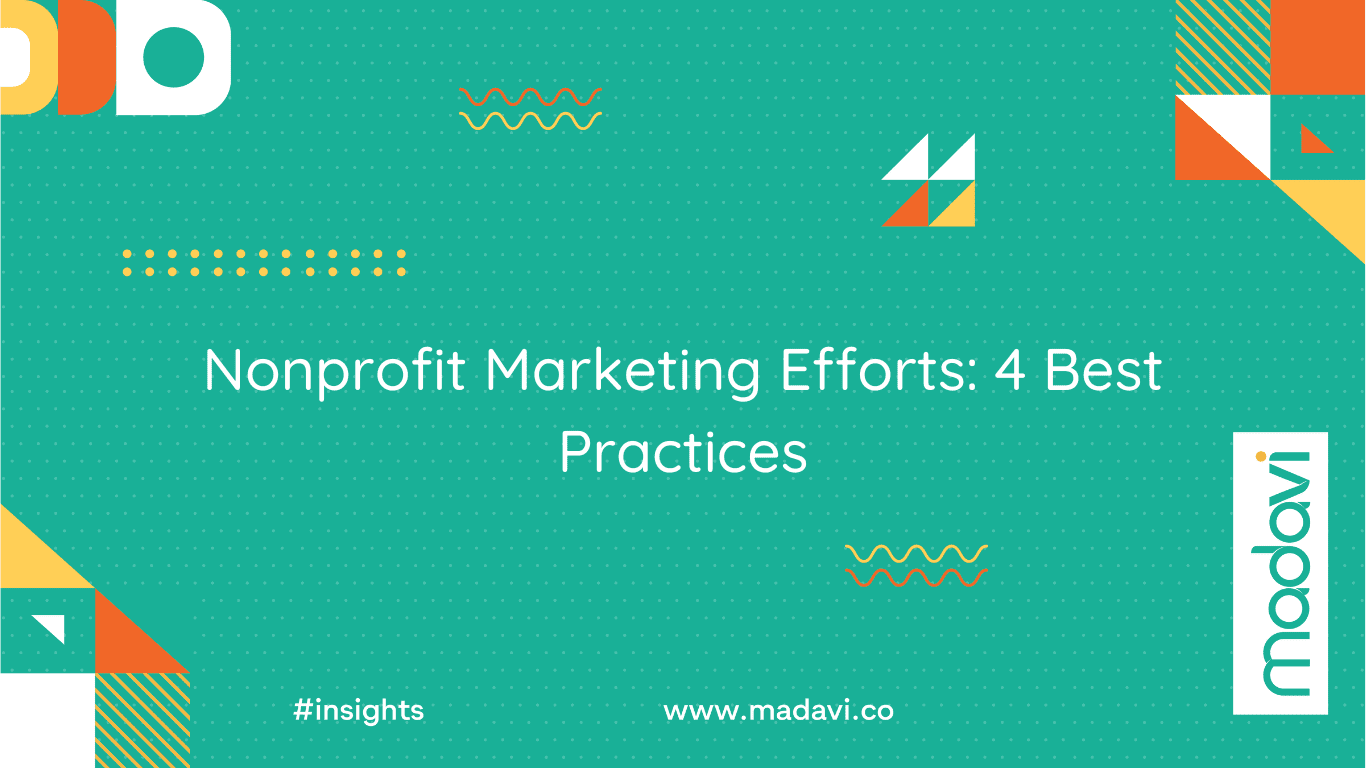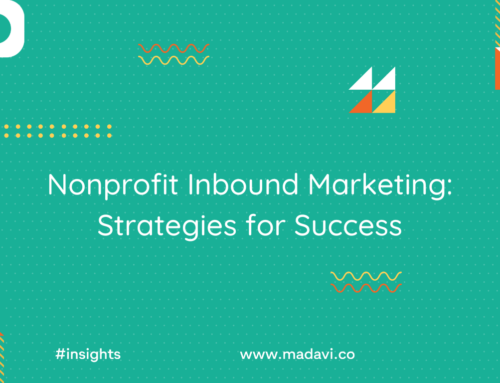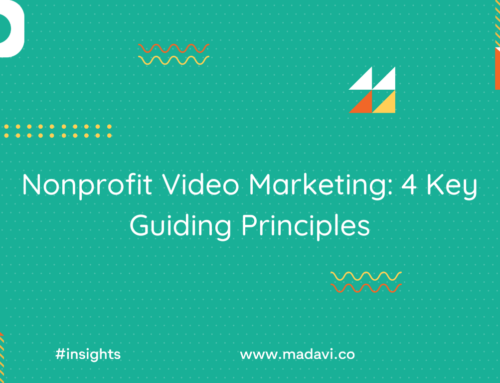Table of Contents
If you’re running a nonprofit, you know how important it is to get your message out there. More importantly, tracking your nonprofit marketing efforts ensures they earn a good return on investment. Marketing is vital for nonprofits to reach out to potential donors, volunteers, and other supporters. However, creating marketing materials and hoping for the best is not enough. You must track your nonprofit marketing efforts and measure your success to be truly effective.
Tracking your nonprofit marketing efforts allows you to see what’s working and what’s not. By keeping track of your marketing metrics, you can identify which campaigns are resonating with your target audience and which are falling flat. This information can help you adjust your marketing strategy to reach your goals better.
When tracking your nonprofit marketing, starting with clear goals is essential. What do you hope to achieve with your marketing efforts? Are you looking to increase donations, attract volunteers, or raise awareness about your cause? Once you have a clear idea of your goals, you can start tracking the metrics that matter most for your organization. From landing page conversion rates to donor acquisition costs, there is a wide range of metrics that can help you measure the success of your nonprofit marketing efforts.

Understanding Nonprofit Marketing
As a nonprofit organization, marketing is a crucial aspect of your operations. It involves using various strategies to promote your mission, raise awareness, and attract donors and volunteers. In this section, we will define nonprofit marketing goals and the role of marketing in nonprofit organizations.
Defining Nonprofit Marketing Goals
The primary goal of nonprofit marketing is to promote your organization’s mission and cause. This involves creating brand awareness, building trust, and establishing a positive reputation among your target audience. You must identify your target audience and tailor your marketing strategies to their needs and preferences to achieve these goals.
Other common nonprofit marketing goals include:
- Raising awareness: This involves educating the public about your organization’s mission and the impact of your work on the community.
- Attracting donors: Nonprofit marketing can help you reach out to potential donors and encourage them to support your cause financially.
- Building relationships: Marketing can help you establish and maintain relationships with donors, volunteers, and other stakeholders.
- Advocacy: Nonprofit organizations often engage in advocacy work to promote social change. Marketing can help you raise awareness about the issues you advocate for and mobilize support.
The Role of Marketing in Nonprofit Organizations
Marketing plays a critical role in the success of nonprofit organizations. It can help you achieve your goals by:
- Building brand awareness: Effective marketing can help you establish a strong brand identity and increase your visibility among your target audience.
- Engaging stakeholders: Marketing can help you engage donors, volunteers, and other stakeholders by providing relevant and compelling content.
- Generating revenue: Nonprofit marketing can help you attract new donors and retain existing ones, leading to increased revenue for your organization.
- Advocacy: Marketing can help you raise awareness about the issues you are advocating for and mobilize support from the public and policymakers.

In summary, nonprofit marketing is essential to your organization’s operations. Setting clear goals and tailoring your strategies to your target audience can build brand awareness, engage stakeholders, and achieve your mission.
Developing a Marketing Strategy
Developing a marketing strategy for your nonprofit organization is crucial to achieving your goals. A well-crafted marketing strategy will help you identify your target audience, craft compelling marketing messages, and choose appropriate marketing channels.
Identifying Target Audiences
You must first identify your target audience to develop an effective marketing strategy. Who are the people that you are trying to reach? What are their needs, interests, and behaviours? Understanding your target audience will help you create marketing messages that resonate with them and choose the proper marketing channels to reach them.
Crafting Effective Marketing Messages
Once you have identified your target audience, you must craft compelling marketing messages that resonate with them. Your messages should be clear, concise, and persuasive. Use language that your target audience will understand and relate to. Highlight the benefits of your organization and how you are making a difference in the world.
Choosing Appropriate Marketing Channels
Choosing the proper marketing channels is crucial to the success of your marketing strategy. You need to select channels that your target audience uses and that will help you reach your marketing goals. Many marketing channels are available, including digital marketing, social media, email marketing, and content production. Choose the most appropriate channels for your organization to help you achieve your marketing goals.
In summary, developing a marketing strategy is crucial in achieving your nonprofit organization’s goals. By identifying your target audience, crafting compelling marketing messages, and choosing appropriate marketing channels, you can create a marketing strategy that resonates with your audience and helps you achieve your marketing goals.

Executing Marketing Campaigns
Once you have set your marketing goals and developed a plan, executing your marketing campaigns is time. This section will discuss how to implement your campaign goals, utilize digital marketing tactics, and leverage social media for engagement.
Implementing Campaign Goals
The first step in executing your marketing campaign is implementing your campaign goals. This involves setting up your marketing efforts to achieve your desired outcomes. You should establish a campaign timeline and ensure that all stakeholders know the campaign’s objectives.
One effective way to implement your campaign goals is by using a project management tool. This allows you to track progress, assign tasks, and collaborate with your team. You can also use a project management tool to monitor your fundraising efforts and ensure that you are on track to meet your goals.
Utilizing Digital Marketing Tactics
Digital marketing tactics are essential for reaching your target audience and promoting your nonprofit. Getting your audience to consider using email marketing, search engine optimization (SEO), and pay-per-click (PPC) advertising would be best.
Email marketing is a cost-effective way to communicate with your supporters and donors. You can use email marketing to share updates, promote events, and ask for donations. It would be best to consider using SEO to optimize your website for search engines and increase your visibility online. PPC advertising can target specific keywords and drive traffic to your website.

Leveraging Social Media for Engagement
Social media is a powerful tool for engaging with your audience and promoting your nonprofit. It would be best to consider using social media platforms like Facebook, Twitter, and Instagram to connect with your supporters and share updates.
To leverage social media for engagement, you should create a strategy that aligns with your marketing goals. You can use social media to promote events, share success stories, and ask for donations. It would be best to consider using social media to build relationships with your supporters and donors.
In conclusion, executing marketing campaigns involves implementing your campaign goals, utilizing digital marketing tactics, and leveraging social media for engagement. By following these steps, you can effectively promote your nonprofit and achieve your marketing goals.
Tracking and Measuring Impact
Tracking and measuring the impact of your nonprofit’s marketing initiatives is critical to the success of your organization. By measuring key performance indicators (KPIs), you can gain insights into how your marketing efforts are performing and make data-driven decisions to improve your outreach.
Key Performance Indicators (KPIs)
KPIs are measurable values demonstrating how effectively your nonprofit achieves its marketing goals. Some common KPIs for nonprofits include website traffic, conversion, click-through, retention, and bounce rates. Tracking these metrics over time allows you to identify areas where your marketing efforts fall short and adjust your strategies accordingly.
Using Google Analytics and Other Tools
Google Analytics is a powerful analytics program that can help you track and measure the impact of your nonprofit’s marketing initiatives. By setting up UTM parameters and tracking website conversions, you can gain insights into how your marketing campaigns are performing and make data-driven decisions to improve your outreach. In addition to Google Analytics, many other analytics platforms and tools are available that can help you track and measure the impact of your marketing efforts.

Analyzing Conversion Rates and Engagement Metrics
Conversion rates and engagement metrics are two important KPIs that can help you measure the impact of your nonprofit’s marketing initiatives. Conversion rates measure the percentage of website visitors who take a desired action, such as donating or signing up for a newsletter. Engagement metrics, such as click-through rates and time on site, measure how engaged your website visitors are with your content. By analyzing these metrics, you can identify areas where your marketing efforts fall short and adjust your strategies accordingly.
Related Posts:
Optimizing for Growth and Retention
As a nonprofit organization, you rely on donations to fund your services and programs. Improving your donor retention rates can help you maintain a stable funding source. Here are some ways to optimize for growth and retention:
Improving Donor Retention Rates
Donor retention rates are a critical metric for nonprofits. It’s easier to retain existing donors than to acquire new ones. According to Forbes, “a 10% increase in donor retention can increase the lifetime value of your donor database by 200%.” So, what can you do to improve your donor retention rates?
- Show appreciation: Thank your donors for their contributions and show them the impact of their donations.
- Communicate regularly: Inform your donors about your organization’s activities and progress.
- Personalize your approach: Tailor your communication to each donor’s interests and preferences.
- Make donating easy: Simplify the donation process and offer multiple payment options.
Adjusting Strategies for Better Outcomes
You need to adjust your strategies based on your performance data to optimize for growth and retention. Use metrics such as donor acquisition cost, donor re-conversion rate, and estimated annual online revenue to evaluate your marketing efforts. Identify areas where you can improve and adjust your strategies accordingly.
For example, if your donor acquisition cost is high, you may need to revise your targeting criteria or adjust your messaging. If your donor re-conversion rate is low, you may need to improve your follow-up communication or offer incentives for repeat donations.

Investing in Long-Term Marketing Efforts
Investing in long-term marketing efforts can help you build a strong brand and establish a loyal donor base. While short-term campaigns can generate quick donations, they may not lead to sustainable growth and retention.
Consider investing in resources and services that can help you improve your marketing and fundraising efforts. For example, you can use marketing automation tools to streamline communication and donor management software to track donor data and engagement.
Optimizing for growth and retention requires a comprehensive approach focusing on improving donor retention rates, adjusting your strategies based on your performance data, and investing in long-term marketing efforts. By implementing these practices, you can build a loyal donor base and maintain a stable source of funding for your nonprofit organization.







